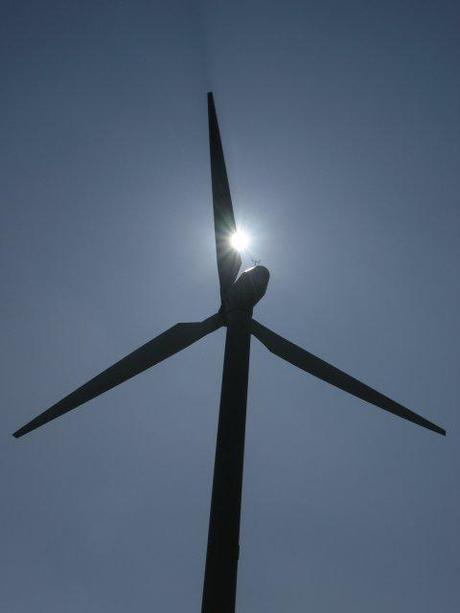 While alternative energy sources seem to be the in-thing today, not all the press it has gotten is good. Everything has pros and cons. However, it’s just as important to distinguish fact from fiction when weighing common perceptions about alternative energy. Here are some of the most common misconceptions:
While alternative energy sources seem to be the in-thing today, not all the press it has gotten is good. Everything has pros and cons. However, it’s just as important to distinguish fact from fiction when weighing common perceptions about alternative energy. Here are some of the most common misconceptions:
They are always cheaper than non-renewable energy sources
Misconception: Sources of renewable energy can provide savings. However, the operative word is “can.” For example, various vehicles on the market today use a blend of renewable and non-renewable energy sources. The cost of such hybrids can range from about $23,000 to over $60,000. This is based on several factors, such as whether the vehicle is a sedan or an SUV, whether it’s a basic model or one with tons of extras, and so on.
Fact: The initial cost of using renewable energy sources are typically higher than when using non-renewable energy sources. Consider that a “hybrid” vehicle can have a price tag that’s $10,000 or more than a comparable vehicle that operates exclusively on gas. Also, consider that hybrid vehicles still use non-renewable energy sources. So, due to the technology available, there’s somewhat of a compromise when choosing them. The good news is that sources of renewable energy can indeed pay for themselves. However, this is based on several different factors. How much of the energy source is available? What’s the initial cost of the energy source? How much energy is needed? Such factors will determine the bottom line when using sources of renewable energy. For example, an 8-kilowatt solar panel system can cost $70,000 USD or more. So recouping the initial costs could take decades.
They never produce any pollution when we use them
Misconception: It is simply untrue to claim that all renewable energy sources produce zilch pollution. Depending on the particular energy source and the system that one uses, any system will produce a certain amount of pollution. For example, consider solar panels. There are some interesting ironies. One is that the manufactures use enormous amounts of fossil fuels to produce the solar cells! It’s also likely that the trucks used to transport the solar cells won’t be solar-powered themselves. Next, the installation of solar panels involves various toxic chemicals, including PVC (arguably the most toxic plastic.) Yet another issue is that while solar cells themselves don’t emit any pollution, while the electricity that the solar energy is converted into does. The solar cells also contain various toxic chemicals, such as mercury. So while the energy the energy that solar panels produce is indeed renewable, chemicals such as mercury in the solar cells become a problem when it’s time to dispose the solar panel.
Fact: Once renewable energy sources are up and running, they produce significantly less pollution than non-renewable energy sources do. This includes several types of chemicals, which when released can cause environmental problems such as greenhouse gases. Thus, the overall use of renewable energy sources is better for the environment. Also, as the technologies of renewable energy sources improve, the amount of pollution that they produce will continue to decrease. Who knows? Maybe one day the factories that produce solar cells for solar panels will themselves be 100% powered using renewable energy sources.
They always involve energy sources whose availability is unlimited
Misconception: A “renewable” energy source is a natural one that is naturally replenished. However, it’s important to note that this doesn’t mean that the energy sources are available constantly and in unlimited amounts. For example, consider solar energy. Miami, located in the “Sunshine State” of Florida typically has about 250 sunny days each year. So there are over 100 days that aren’t sunny. Also, the sun only shines for about one-third of the day. The location of solar panels can also impact how much sunlight they’re able to collect. The source of hydro power, water, is another important example to consider. Only about 2% of the Earth’s water supply is freshwater. Also, due to factors such as overpopulation and over-consumption, the value of water has exponentially increased.
Fact: While renewable energy sources aren’t “unlimited,” by definition they’re replenished naturally. This provides a benefit over non-renewable energy sources. Once the world’s total supply of coal, petroleum, and natural gas has been consumed completely, it will be gone forever. On the other hand, the sun won’t burn out until billions of years from now.
Alternative energy sources will replace non-renewable energy sources now and in full
Misconception: That won’t happen. Currently, about 16% of the Earth’s energy originates from renewable energy sources, such as solar, wind, hydro, geothermal, and so on. That figure is increasing quickly throughout the world. However, 16% isn’t remotely close to 100%. The other 86% of the Earth’s energy originates from sources such as coal, petroleum, and natural gas. According to “Forbes Magazine,” the first (Exxon Mobile) and third (Chevron) most profitable companies in the USA during 2010 were gas companies that combined for nearly $50 billion in profits. Non-renewable energy is a business, and business is good.
Fact: Renewable energy sources won’t completely replace non-renewable energy sources in the near future. While the global use of energy sources such as the sun and wind are increasing steadily, the technology hasn’t caught up with the demand. However, while the perception is generally that renewable energy sources are a “good thing,” the fact is that the technology for such energy hasn’t caught up with the interest in it.
M.H is highly involved in eco-friendly and alternative energy. He runs a site where he explains how different types of alternative energy sources work.

